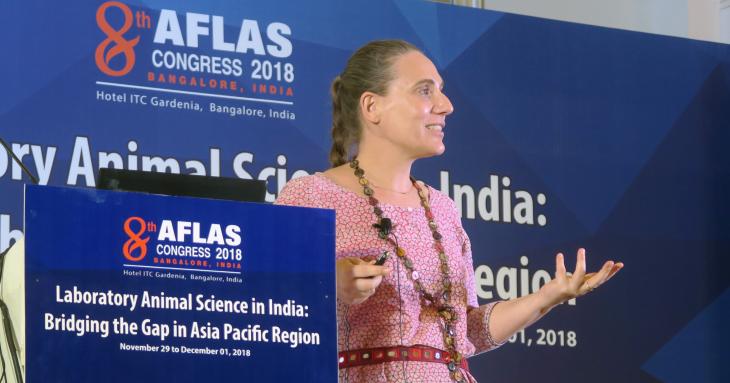-
Early worm gets new genes: C elegans Facility
Caenorhabditis elegans are tiny free-living nematodes that live in soil. A large number of scientists have taken fancy to these worms as model organisms owing to their simple genome, tiny size, ease of growing and transparent body.
-
Miniaturizing Life: Microfluidics and Microfabrication Facility
Cell and tissue culture has played an important role in life science research. However, cells in culture behave quite differently from cells in vivo, and the knowledge gained from these cannot be directly extrapolated to cells in the context of an organism. There is a great interest in the scientific community to generate devices that can control the microenvironments of cells in culture.
-
Designing and immortalizing genomes: Mouse Genome Engineering Facility
Contemporary genome engineering technologies have made it possible to use a variety of model organisms to their full potential in genetic research. Although comparatively simpler and time-saving, these technologies still require a considerable amount of technical and scientific skills in addition to state-of-the-art infrastructure. Facilities that can take charge of generating such resources are constantly in demand.
-
A national repository of specimen: Collections Facility
Reliable identification of newly discovered species is vital for field biologists. Access to a type specimen repository to submit stocks to, and an expert taxonomist/systematist to identify and classify them is important for comparative studies.
-
Zooming in to the limits: Electron Microscopy Facility
Seeing is believing. But what happens when one deals with really tiny structures, invisible even to visible light?
-
Reprogramming Life: Stem Cell Facility
“Facilitating Research” is a series put together by Dr Deepti Trivedi, Head of Research Facilities, to explore what it requires to run a research facility at Bangalore Life Science Cluster. She will be talking to the Facility In-Charges of different facilities over the next few months.
-
Decoding the Genome - Next Generation Genomics Facility
Core facilities are an integral part of modern research. They provide not only unique resources and state-of-the-art capabilities but also technical expertise and experience so that a non-expert scientist can confidently perform specialized experiments and aim to move their research program in any new direction. Facilities serve as a nexus for collaborations, interdisciplinary research, and platforms for cost-effective innovation.













